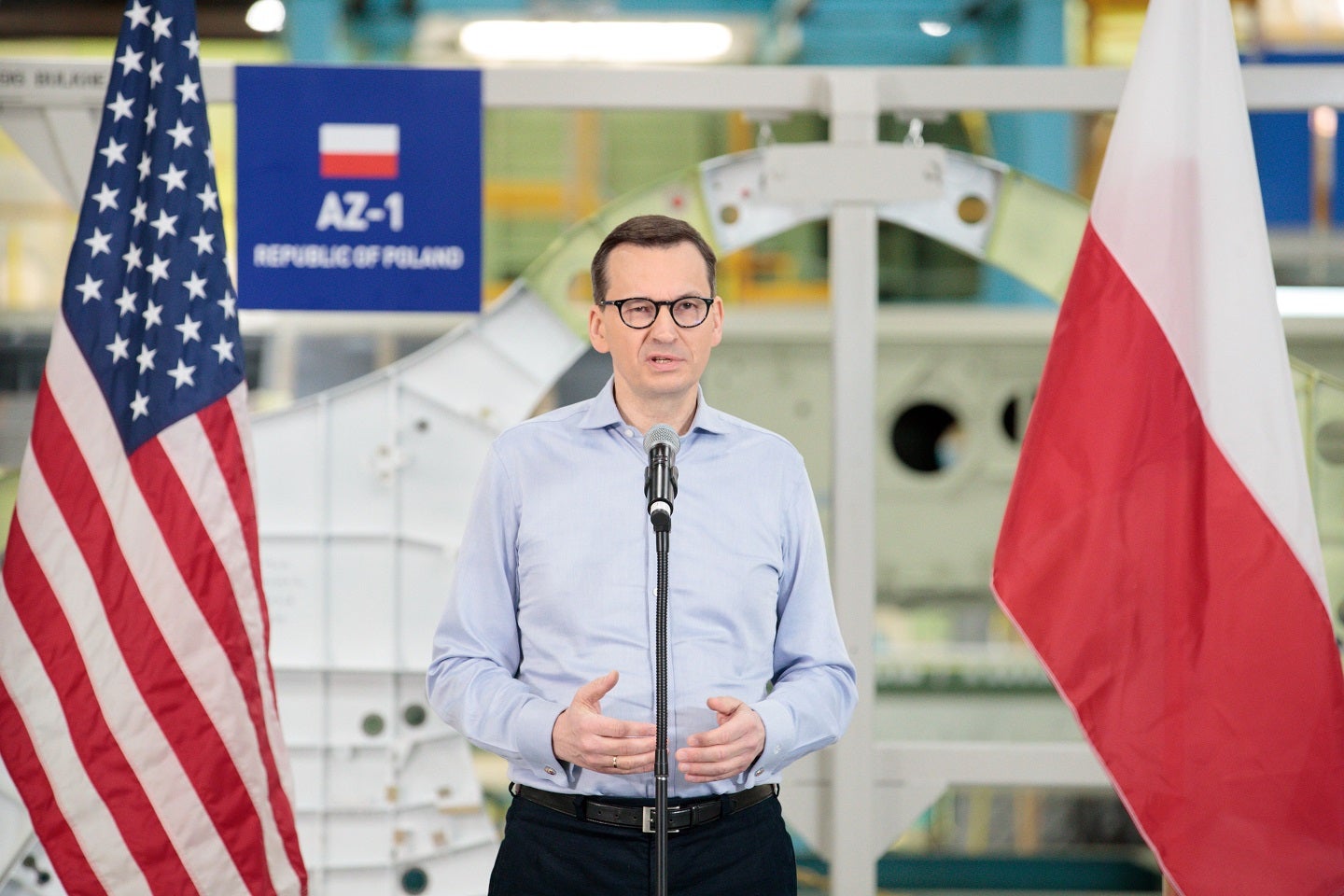
The Polish Air Force’s F-35 Lightning II combat aircraft were officially in production at Lockheed Martin’s facilities on 12 April 2023.
The original equipment manufacturer (OEM), Lockheed Martin, will now produce the standard Nato combat aircraft, the F-35A conventional take-off and landing (CTOL) aircraft, which will be delivered to Poland from 2024 through to 2030.
The first component, the centre fuselage wing assembly (CWA) represents approximately one-quarter of the aircraft’s fuselage. The aircraft’s wings are attached to the CWA during final assembly, which takes place at the Lockheed Martin facility in Fort Worth, Texas.
This milestone in Poland’s F-35 prpgramme was highlighted when Prime Minister Mateusz Morawiecki visited the facility in the state of Georgia to learn more about Lockheed Martin’s efforts to support Poland’s armed forces.
Poland will receive 32 F-35s equipped with Technology Refresh 3 (TR-3) and Block 4 capabilities. TR-3 represents the most significant evolution in capabilities to date for the F-35, including increased computing power, sensor capability, weapons capacity and more. With its unmatched data sharing capabilities, the F-35 will connect national security platforms into a cohesive network that provides awareness across the 21st century security battlespace and enables a clear decision-making advantage.
Lockheed Martin has supported Poland for more than 20 years, providing a variety of defence and security programmes including Air Sovereignty Operation Centers, sniper advanced targeting pods, Black Hawk helicopters and supporting pilot, maintainer and soldier training through live and simulation-based training environments.

US Tariffs are shifting - will you react or anticipate?
Don’t let policy changes catch you off guard. Stay proactive with real-time data and expert analysis.
By GlobalDataPolish Air Force
A major concern for the Polish Armed Forces is the need to modernise so that the country can integrate itself into the latest Nato standard defence platforms, equipment and resources.
The F-35A CTOL is certainly a large piece in this puzzle. The procurement of the F-35A will replace the Polish Air Force’s outdated platforms. GlobalData tells us that there are currently four multi-role aircraft that can be applied to combat missions in the Polish Air Force. These include 25 units of MiG-29As and seven units of MiG29-UBs acquired from Russian between 2003-2004, as well as 36 units of F-16C Block 52 and 12 units of F-16D Block 52 acquired from the US prime General Dynamics in 2003.
Replacing their 20 year-old fleet of MiG variants will be a critical aspect of the modernisation programme as these will not integrate so well into Nato fleets. Taking up the F-35A will certainly rectofy the problem as the standard Nato choice of combat aircraft, especially considering that 400 F-35s are expected to be inducted across Nato fleets by 2030, according to Lockheed Martin.
Going forward, GlobalData expects Poland to spend $266m on its F-35A programme in 2023, which will grow to $391m by 2033.
Continued F-16 fleets
However, Poland is not as strained by its F-16 fleet compared with the problems posed by its Russian MiGs.
Lockheed Martin has been keen to bring the fourth-generation legacy F-16 into use for contemporary aerial combat. The OEM has recently declared its ambition to enable the F-16 to operate well into the 2060s. Updating the combat aircraft with fifth-generation capabilities, the F-16 will prove itself to be apt and useful in unravelling security crises countries are facing.
Poland does not need to replace its current F-16 fleet, it only needs to adapt them with the latest technological enhancements including Northrop Grumman’s AESA radar system and Lockheed’s Automatic Ground Collision Avoidance System.
The F-16 has been adept at meeting current problems in aerospace too. Most recently on 7 April, when two Romanian F-16s were scrambled to safeguard Baltic airspace in response to two Russian Suhoi Su-27 Flanker fighter jets in the region.
“The successful completion of the first scramble task within the enhanced Air Policing mission in the Baltic States confirms the… ability of the Romanian Air Force to deploy and use our F-16 aircraft in NATO missions”, said the commander of the F-16 detachment, Colonel Cosmin Vlad.



